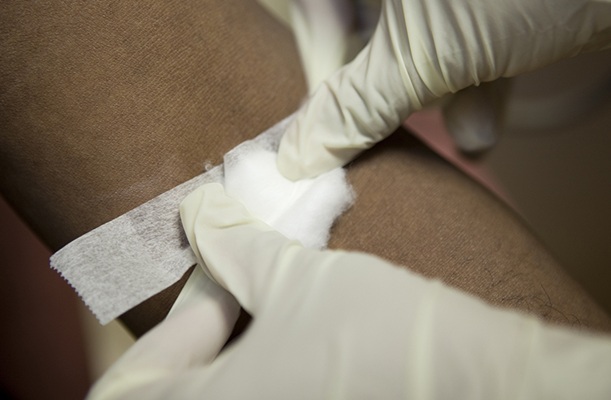MRSA Identified Using Nasal Swabs
By LabMedica International staff writers
Posted on 13 Sep 2012
Methicillin-resistant Staphylococcus aureus (MRSA) infections have been detected by nasal swabbing using agar culture methods. Posted on 13 Sep 2012
The proportion of patients with MRSA that were correctly identified by nasal swabs has been compared with multiple body site testing using agar and nutrient broth culture.
A cross-sectional study has been carried out by the Health Protection Scotland (Glasgow, UK) on adult patients admitted to 36 general specialty wards of two large hospitals in Scotland (UK). Patients were screened for MRSA via multiple body site swabs such as nasal, throat, axillary, perineal, wound, and invasive device sites. These were cultured individually on Brilliance MRSA chromogenic agar (Oxoid; Basingstoke, UK) and pooled in nutrient broth. Suspect colonies were confirmed by a coagulase test using the Prolex Staph Xtra Latex kit (Pro-Lab Diagnostics; Bromborough, UK). Combined results from all sites and cultures provided a gold-standard estimate of true MRSA prevalence.
The scientist found that nasal screening performed better than throat, axillary, or perineal screening, but only identified 66% of true MRSA carriers against the gold standard at an overall prevalence of 2.9%. Axillary screening performed least well. Combining nasal and perineal swabs gave the best two-site combination with 82%. When combined with realistic screening compliance rates of 80%-90%, nasal swabbing alone probably detects just over half of true colonization in practice. Swabbing of clinically relevant sites such as wounds and indwelling devices, is important for a small but high-prevalence group.
The investigators concluded that nasal swabbing is the standard method in many locations for MRSA screening. Its diagnostic efficiency in practice appears to be limited, however, and the resource implications of multiple body site screening have to be balanced against a potential clinical benefit whose magnitude and nature remains unclear. The study was published in the August 2012 issue of the journal Infection Control and Hospital Epidemiology.
Related Links:
Health Protection Scotland
Oxoid
Pro-Lab Diagnostics








 (3) (1).png)





